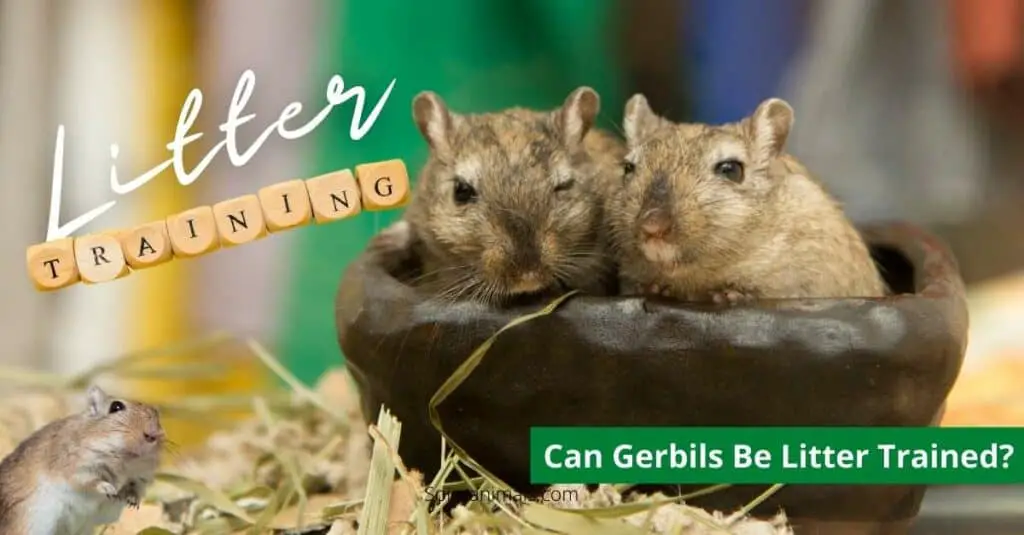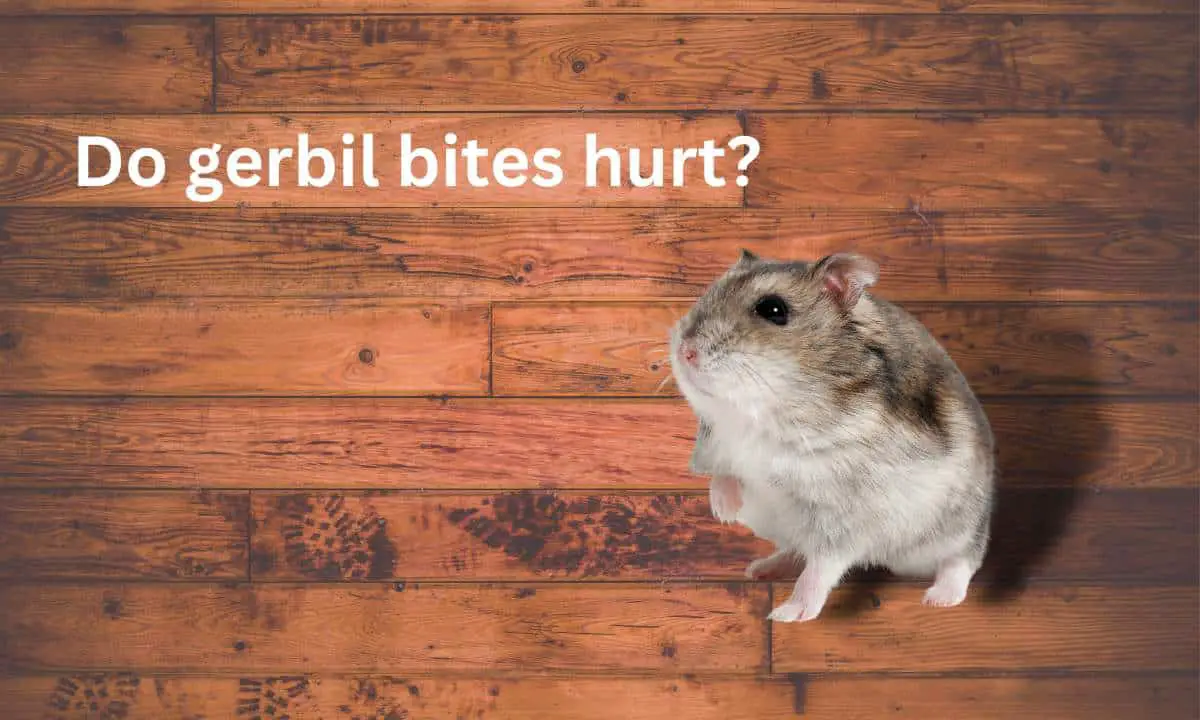Gerbils are fascinating creatures known for their unique behavior, including their tendency to thump or drum with their back feet. This behavior is commonly observed in gerbils and has been the subject of much curiosity among pet owners and researchers alike.
Why do gerbils thump? Gerbils thump to communicate their excitement, stress, or perceived threats by rhythmically pounding their hind legs on the ground, often triggering a domino effect with other gerbils joining in, revealing their intricate social dynamics.
Table of Contents
Understanding Gerbils’ Drumming Actions
Gerbils are fascinating creatures that have a unique way of communicating through their drumming actions. When gerbils feel threatened or want to assert dominance, they often stomp their feet on the ground as a sign of warning or aggression. This behavior is commonly referred to as foot stomping and is frequently observed among gerbil colonies.
- Foot stomping in gerbils is not just a random action; it carries meaning and serves as an important form of communication within the group. When a gerbil starts thumping its feet, it sends out vibrations that can be felt by other members of the colony. This rhythmic drumming can convey various messages, such as alerting others to potential danger or indicating territorial boundaries.
- Understanding gerbils’ foot stomping requires careful observation of their body language and individual behaviors. For example, when a dominant gerbil wants to establish its authority over another member of the group, it may stand tall and jump slightly while performing the foot stomping motion. On the other hand, if a subordinate gerbil feels threatened by an alpha member, it may crouch down lower while thumping its feet.
- By paying close attention to these subtle cues and interpreting the meaning behind each thump, we can gain valuable insights into how gerbils communicate with one another in their social hierarchy. So next time you see your pet gerbil engaging in this intriguing behavior, take a moment to observe their body language and try to decipher what they might be trying to communicate through their rhythmic drumming actions.

The Meaning Behind Gerbil Thumping
- Gerbils are known to exhibit a behavior called “drumming,” which involves thumping their back feet against the ground. This action is often associated with various meanings and intentions.
- One of the primary reasons gerbils engage in drumming is to communicate with other gerbils, especially when they want to mate. The rhythmic thumping serves as a way for them to attract potential mates and express their readiness for reproduction.
- Additionally, gerbil drumming can also indicate a sense of threat or danger. When they perceive something alarming or feel threatened, they stomp their feet as a warning signal to other gerbils nearby. This behavior helps alert others about potential dangers in their environment.
Gerbil drumming has multiple purposes and meanings:
- It can be a means of communication between gerbils who want to mate.
- Drumming also serves as an alarm system, warning fellow gerbils about possible threats or danger in the surroundings.
Overall, understanding the meaning behind gerbil thumping provides valuable insights into these small creatures’ social interactions and survival strategies within their cage or pet habitat.
Exploring the Gerbil’s Thump Communication
Gerbil stomping is a fascinating behavior that plays a crucial role in the communication of these small rodents. When a gerbil feels threatened or senses danger nearby, it will often thump its hind leg against the ground to produce a loud sound. This rhythmic drumming can be heard by other gerbils and serves as a warning signal.
The sound produced by gerbil drumming is distinct and easily recognizable. It sounds like rapid, repetitive thumps that echo through their habitat. While this behavior may seem simple at first glance, it carries important meaning for both male and female gerbils.
For male gerbils, drumming can be an effective way to assert dominance and establish territory. When encountering another male in their vicinity, one may stomp its leg to convey strength and intimidate potential competitors. On the other hand, female gerbils may use drumming as a means of attracting mates or signaling receptivity during mating season.
gerbil stomping can also serve as an alarm call when there is perceived danger from predators or unfamiliar noises nearby. By creating such audible vibrations through their powerful hind legs hitting the ground, they alert others in their group to be on high alert and ready for potential threats.
It’s worth noting that while the primary purpose of thumping is communication within the species itself, humans who care for pet gerbils should also pay attention to this behavior. If you hear your pet *gerbil drumming*, it could indicate that they are feeling stressed or anxious about something in their environment.
In summary (without using those words), exploring the *gerbil’s thump communication* reveals how this seemingly simple behavior holds significant importance for these social animals’ survival strategies and interactions with each other.
• Gerbil stomping is a behavior that plays a crucial role in gerbil communication.
• When threatened or sensing danger, gerbils will thump their hind leg against the ground to produce a loud sound.
• The sound produced by gerbil drumming is distinct and easily recognizable.
• Male gerbils use drumming to assert dominance and establish territory.
• Female gerbils may use drumming as a means of attracting mates or signaling receptivity during mating season.
• Gerbil stomping can also serve as an alarm call when there is perceived danger from predators or unfamiliar noises nearby.
• Pet owners should pay attention if they hear their pet gerbil drumming, as it could indicate stress or anxiety.
The Role of Thumping in Gerbil Mating
When it comes to gerbil mating, thumping plays a crucial role in communication between the potential mates. Gerbils will drum their hind feet on the ground as a way to communicate with each other. This behavior is particularly observed when one gerbil wants to initiate or stop the mating process.
The thumping action serves as a signal for both male and female gerbils. If one gerbil starts drumming its hind feet, it indicates that they are ready and willing to mate. On the other hand, if a gerbil feels stressed or uncomfortable during the mating process, it may start drumming as a way of expressing its discomfort and trying to halt the interaction.In the wild, this form of communication through thumping is essential for survival.
Gerbils use this noise-making behavior to warn nearby gerbils about potential threats in their environment. By standing up on their hind legs and creating loud vibrations with their feet hitting against the ground, they can alert others of danger approaching. This allows them to protect themselves and maintain safety within their social groups.
So next time you hear your pet gerbils engaging in some intense foot stomping, remember that they are simply using this natural means of communication. It’s fascinating how these small creatures have developed such an effective way to convey messages without vocalizing words like we humans do!
How Gerbils Use Thumping to Warn of Danger
Gerbils have a unique way of warning each other about potential danger through their thumping behavior. When they sense danger nearby, such as the presence of a predator or an unfamiliar noise, they immediately start to thump their hind legs on the ground. This action serves as a clear signal to other gerbils that something alarming is about to happen.
The purpose behind this thumping behavior is not only to alert others but also to get themselves ready to mate. When gerbils are in close proximity and one notices a possible threat, it will begin thumping its feet rapidly and loudly. This allows the gerbil near it to quickly notice the signs of danger and react accordingly by seeking safety or preparing for defense.
Thumping is not only used when there’s an immediate threat; gerbils also engage in this behavior more frequently during certain times. For instance, female gerbils tend to be much quieter with their foot stomping until they are ready for mating. Male gerbils may repeat this action every four or five days as part of their natural communication process within the group. It’s fascinating how these tiny creatures can communicate effectively through such simple means, making a big difference in ensuring their survival and well-being.
So remember, if you ever observe your pet gerbil suddenly starting to thump its feet repeatedly, take notice! They are trying to warn you about something potentially dangerous nearby or signaling that they’re ready for mating. Paying attention and understanding these signals can help create a safer environment for your furry friends!
Gerbil Drumming: Is it a Threat or a Signal?
- Gerbil drumming, also known as thumping, is a fascinating behavior exhibited by these small animals. When gerbils feel threatened or sense danger, they often start stomping their hind legs on the ground to create loud vibrations. This rhythmic action serves as a communication method within their clan and can have different meanings depending on the context.
- One possible interpretation of gerbil drumming is that it acts as a warning signal to other members of the group. By creating vibrations through thumping, gerbils alert their companions to potential dangers in the environment. This form of body language allows them to communicate without making noise that could attract predators.
- Another theory suggests that gerbil drumming may be used for territorial purposes. Similar to other species, such as birds marking their territory with songs, gerbils may use thumping to establish dominance and claim ownership over a specific area. The tiny creatures are surprisingly loud when they tap their feet against the ground, and this sound can travel quite far within their burrow or natural habitat.
It is important to note that while researchers have made progress in understanding certain aspects of gerbil drumming behavior, there is still much more we need to uncover about its true purpose and significance among different species and individual gerbils alike. So next time you hear your pet gerbil thumping away in one corner of the room or observe wild ones doing so somewhere out in nature, take a moment to appreciate this unique form of communication between these fascinating creatures!
The Frequency of Gerbil Foot Stomping
Gerbil foot stomping is a fascinating behavior that occurs with varying frequency among individuals. While some gerbils may stomp their feet frequently, others may do so less often. The frequency of foot stomping can depend on several factors, including the gerbil’s personality, environment, and current circumstances.
One possible reason for increased foot stomping in gerbils is when they sense danger or feel threatened. When a potential threat impends, such as the presence of a predator or an unfamiliar noise, gerbils may instinctively stomp their feet as a warning signal to other members of their group. This behavior serves as a way to communicate potential danger and alert others to be on high alert.
On the other hand, it’s important to note that not all instances of foot stomping indicate imminent danger. Gerbils can also exhibit this behavior during play or excitement. For example, if you’ve just introduced your gerbil to a new toy or provided them with treats they enjoy, they might engage in foot stomping as an expression of happiness and enthusiasm. Understanding the context and observing other accompanying behaviors can help determine whether the foot stomping is related to fear or joy.
Overall, while there isn’t one fixed frequency at which gerbils stomp their feet since it varies from individual to individual based on various factors like personality and situation; it’s clear that this behavior plays an essential role in communication within the gerbil community. Whether it’s used as a warning signal during times of perceived danger or simply expressing excitement during playtime moments – gerbil foot stomping remains an intriguing aspect of these small rodents’ social interactions.




